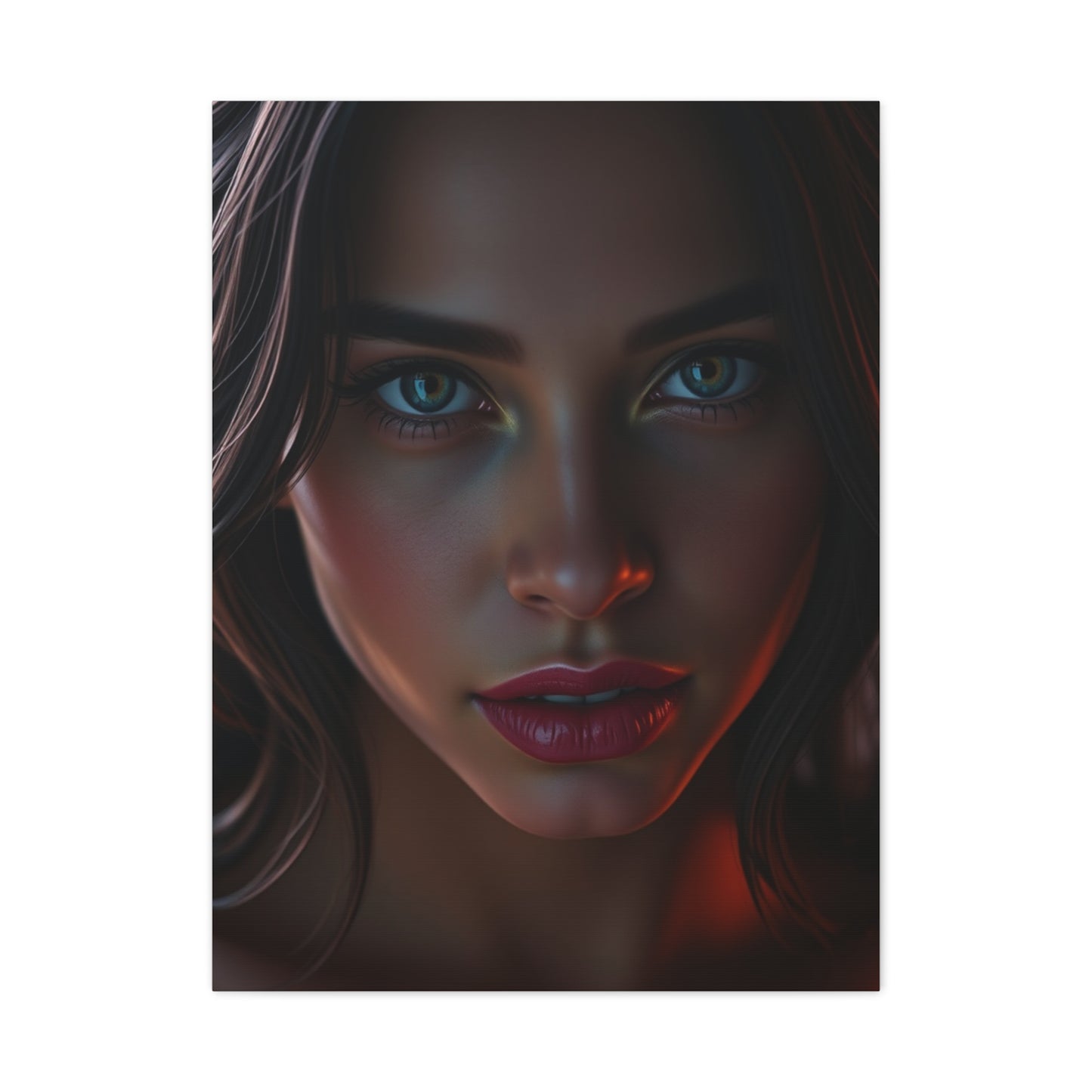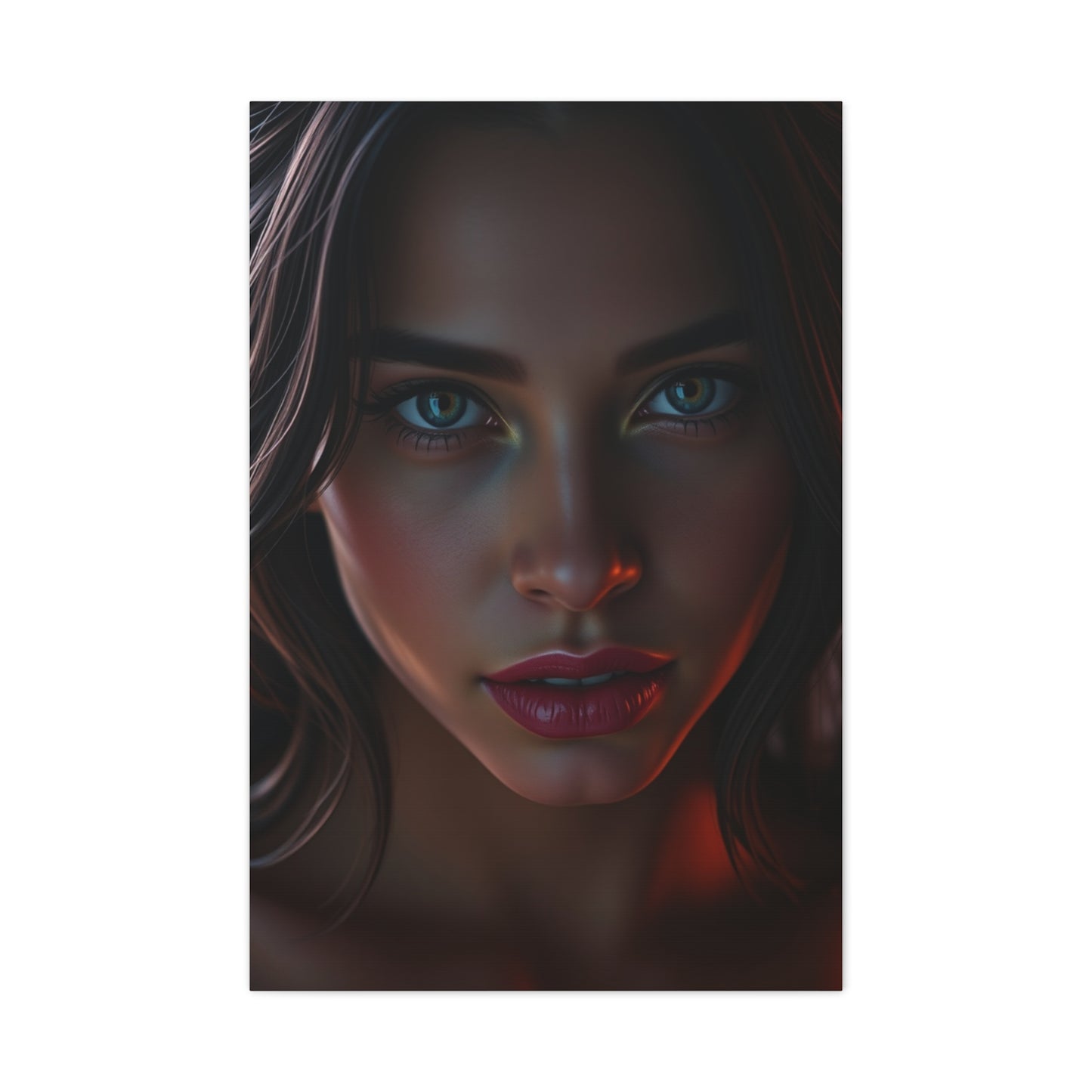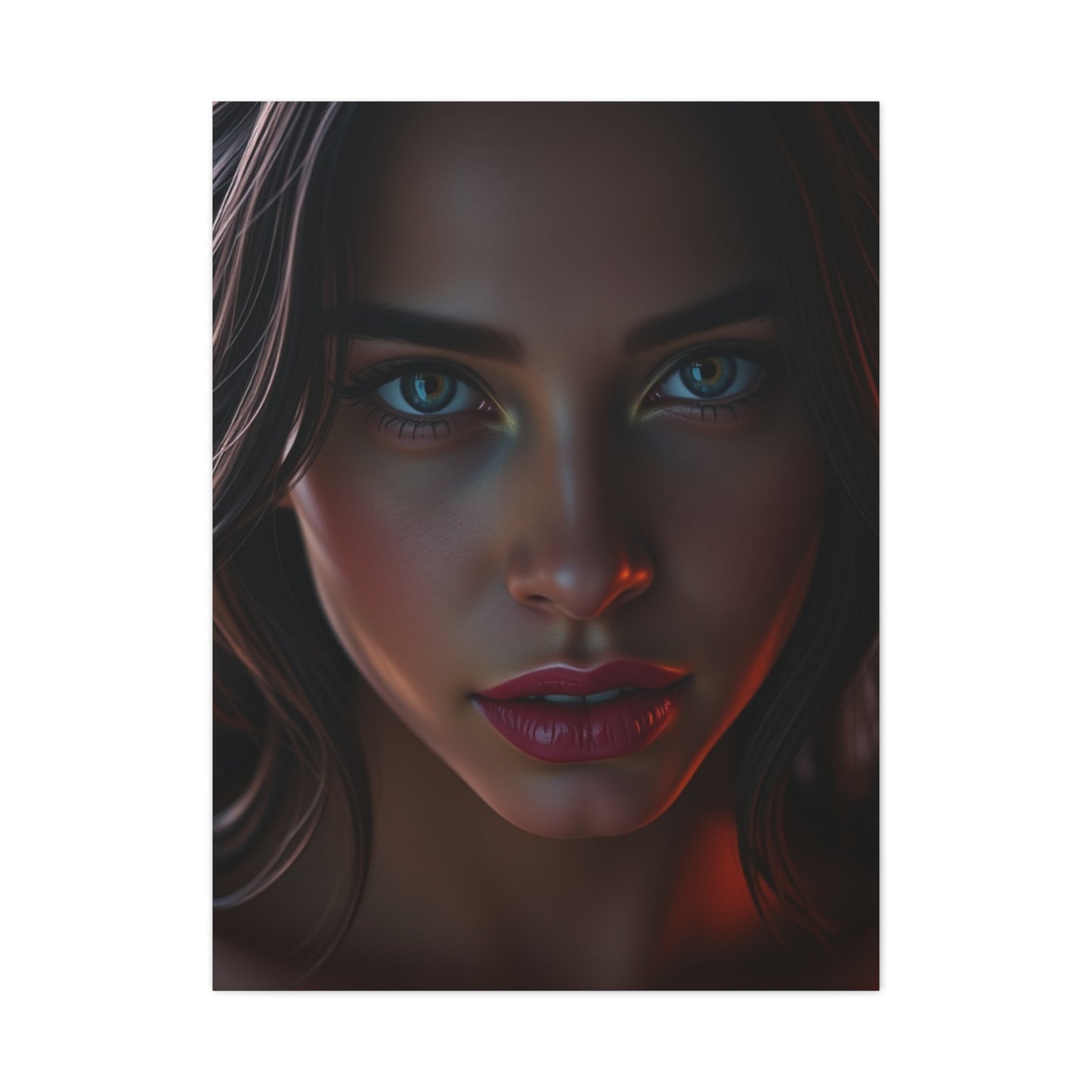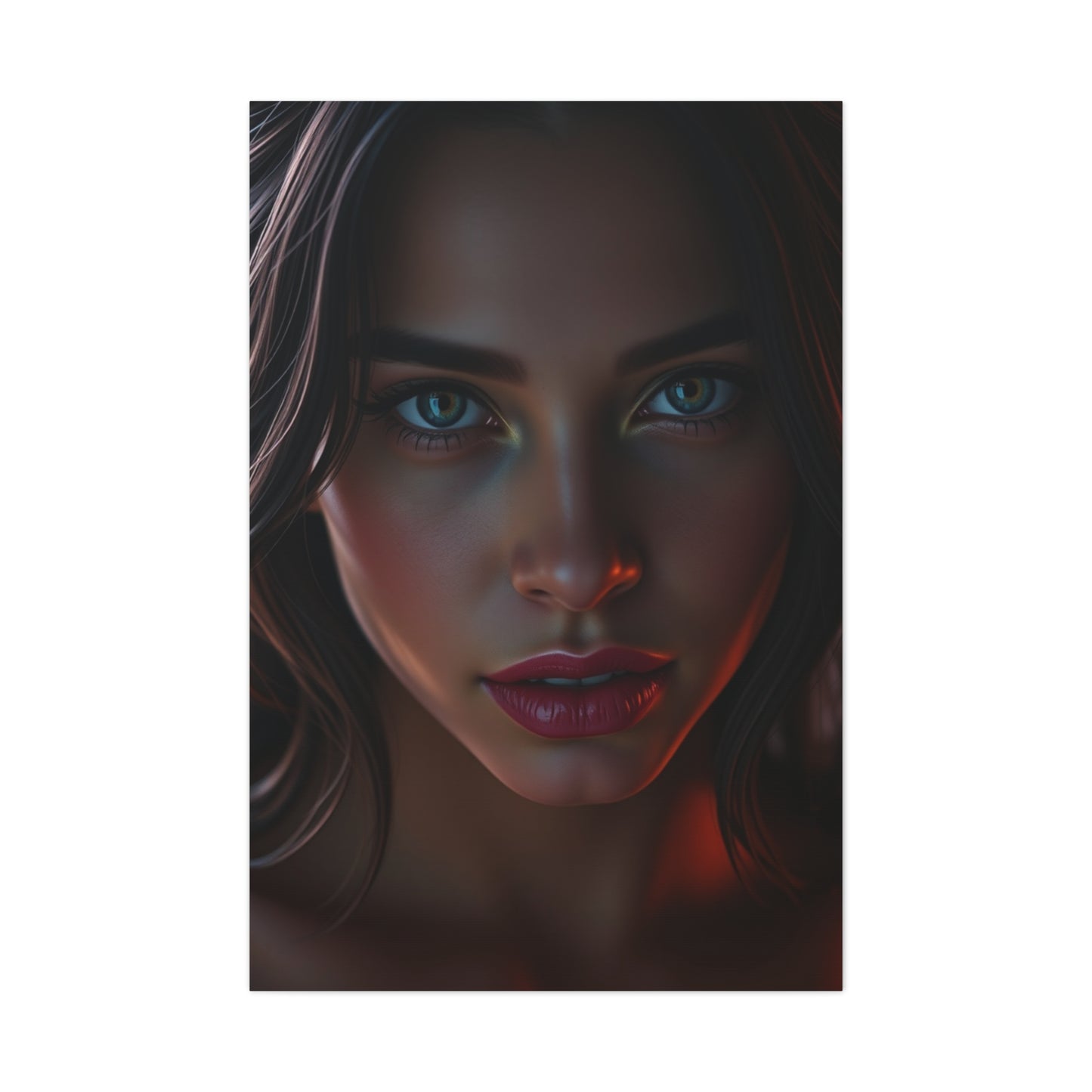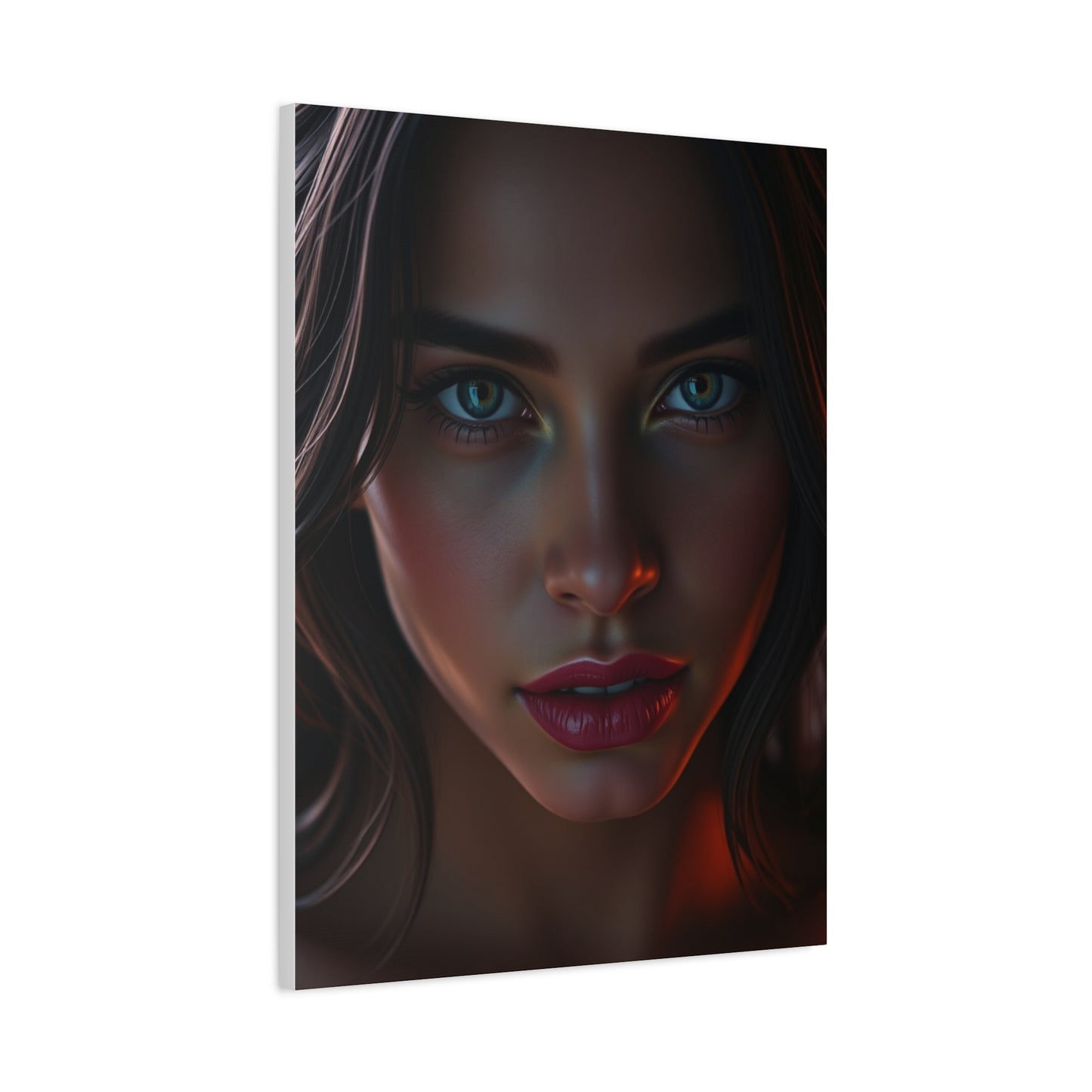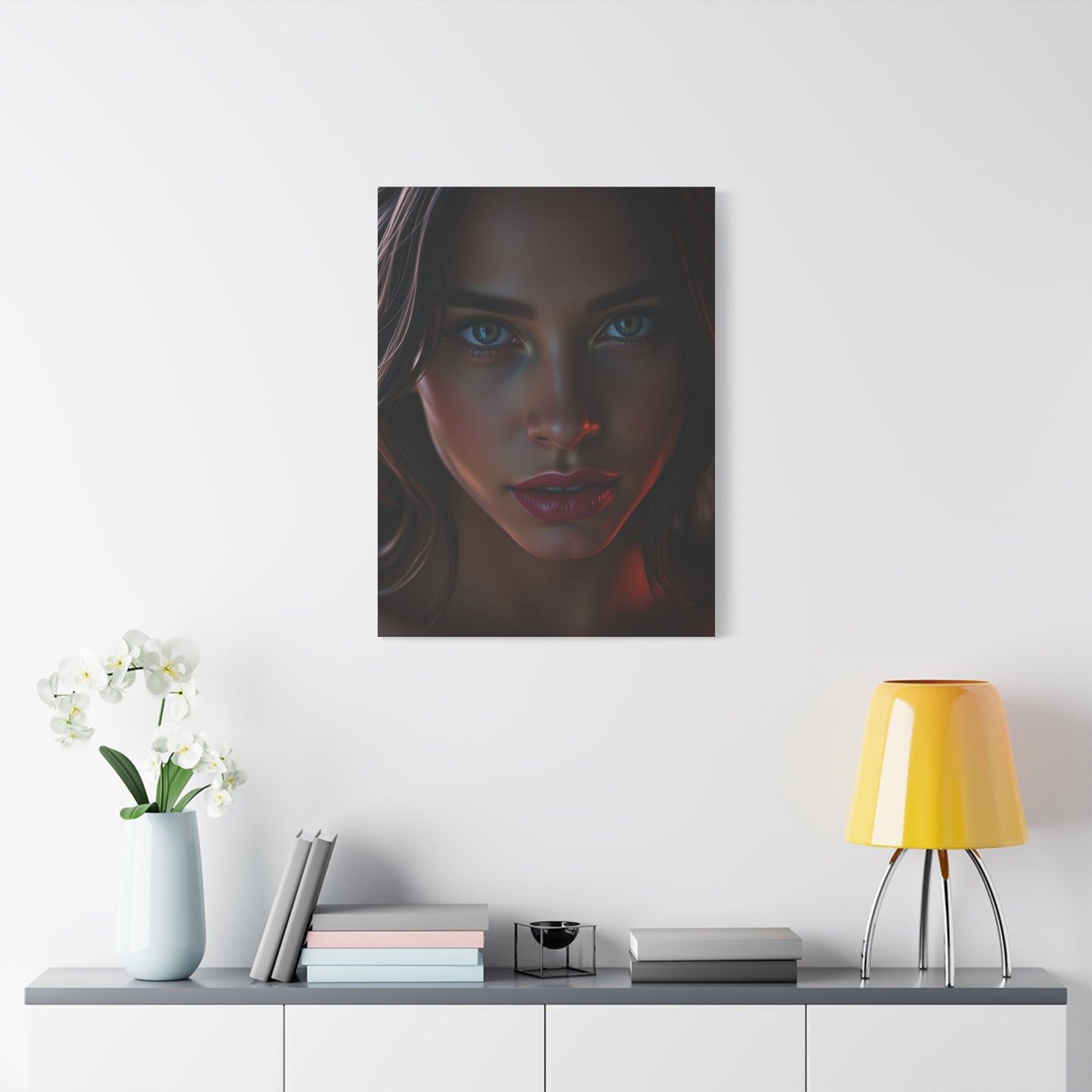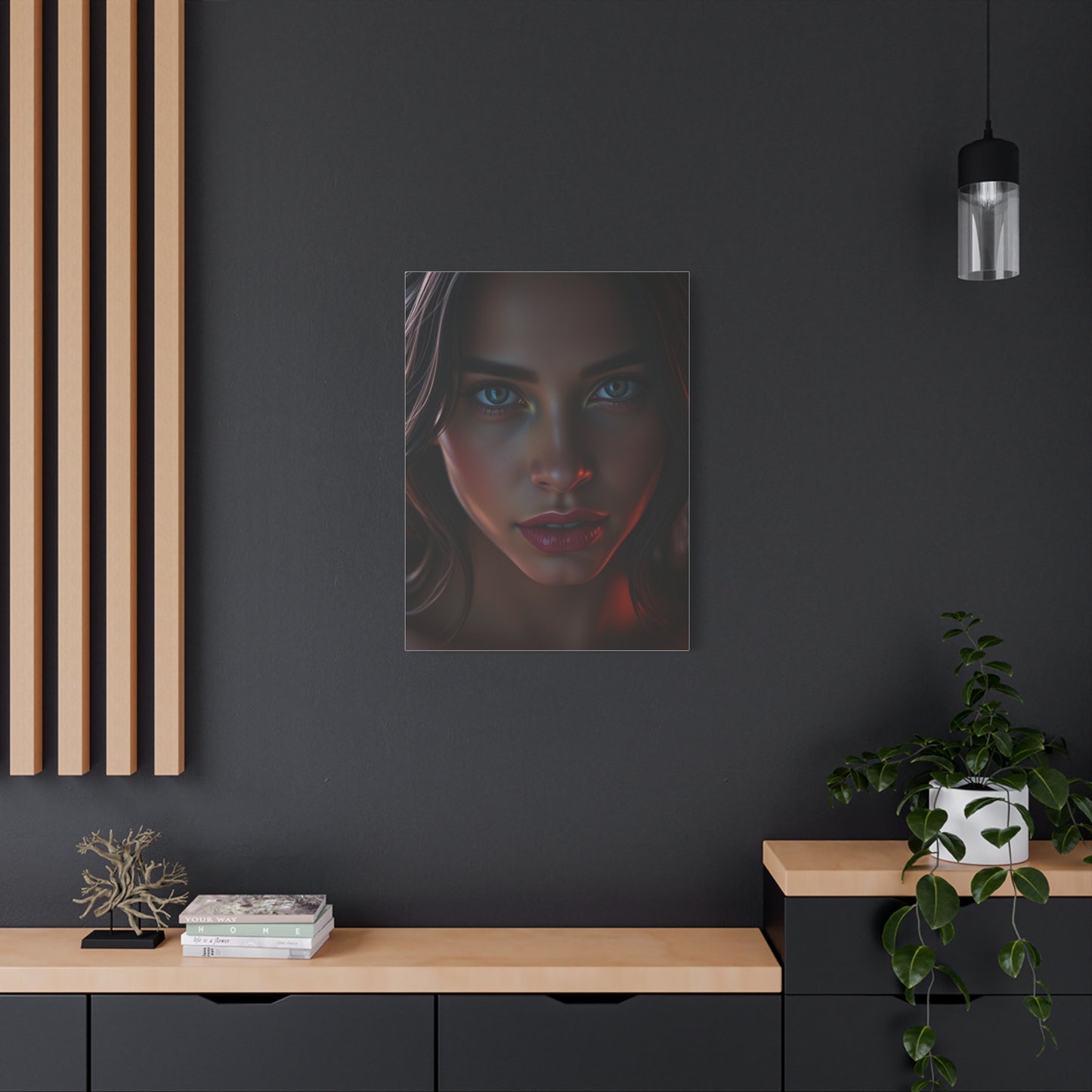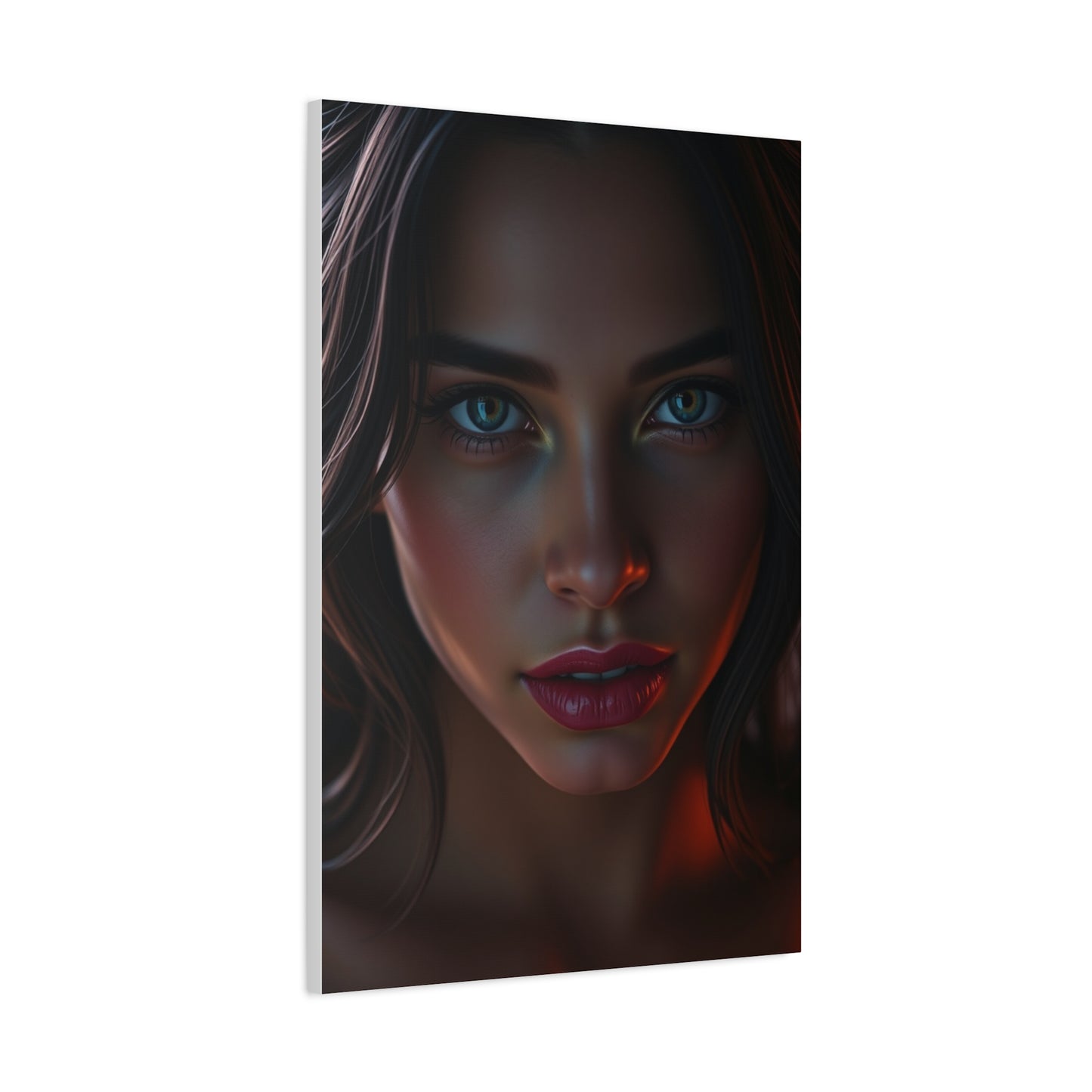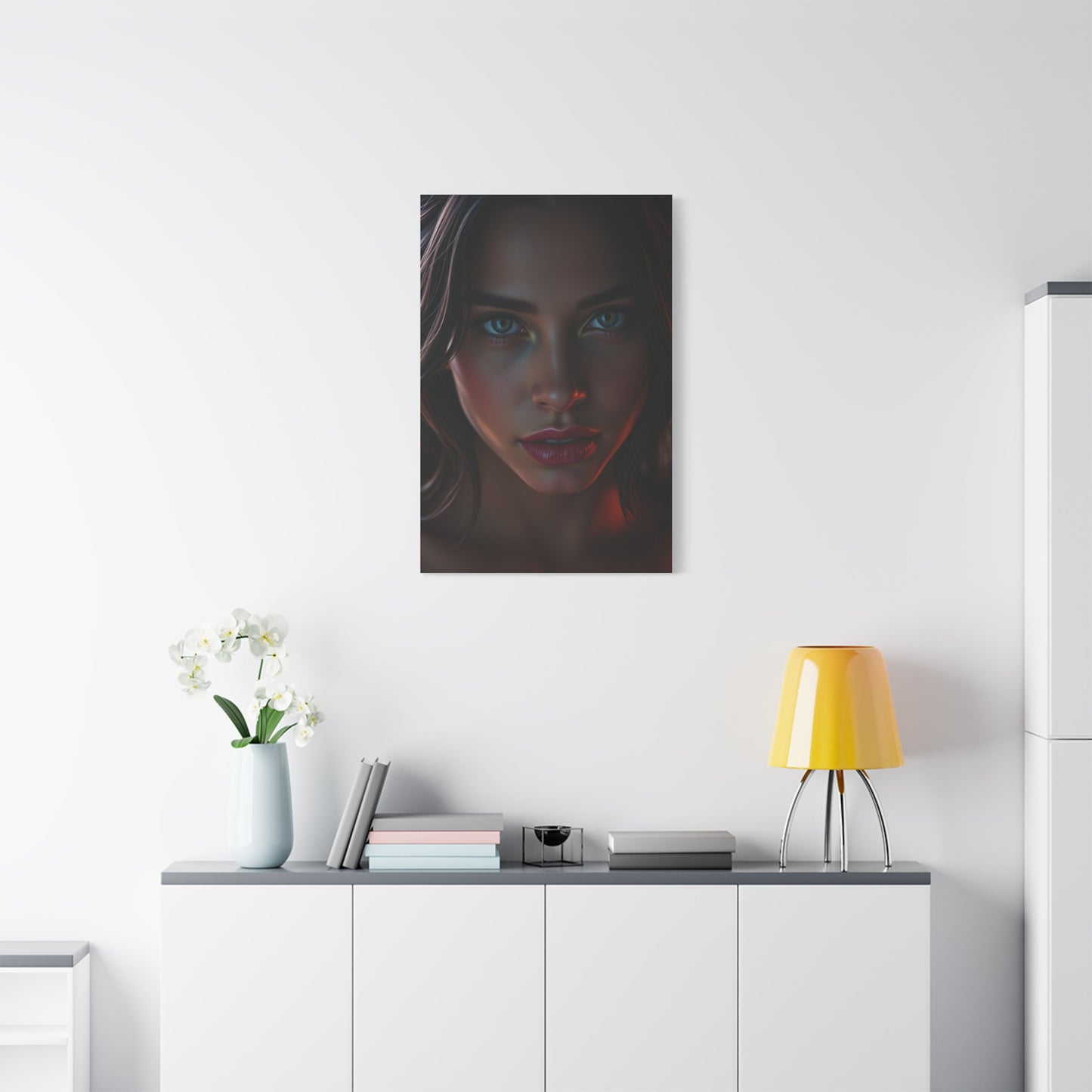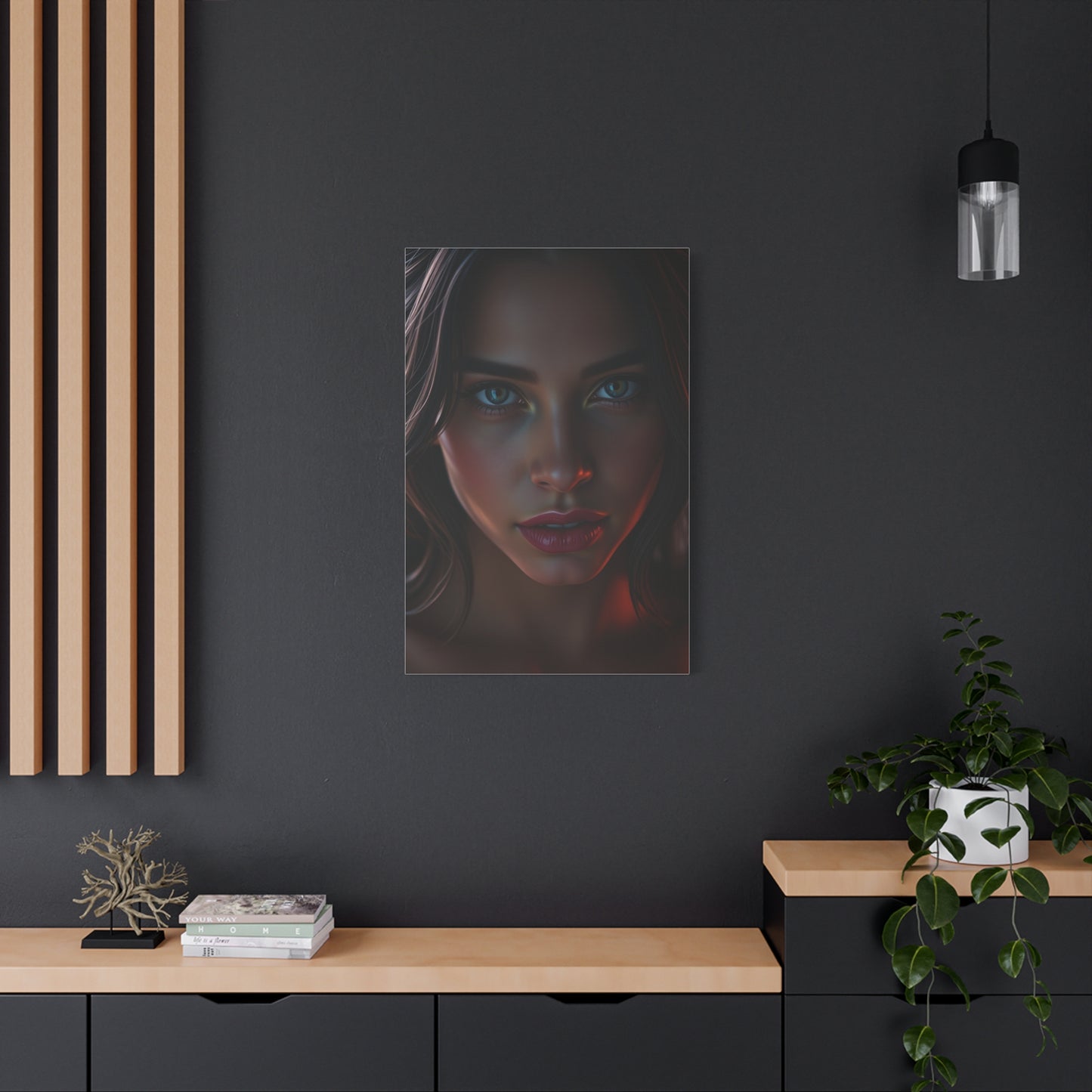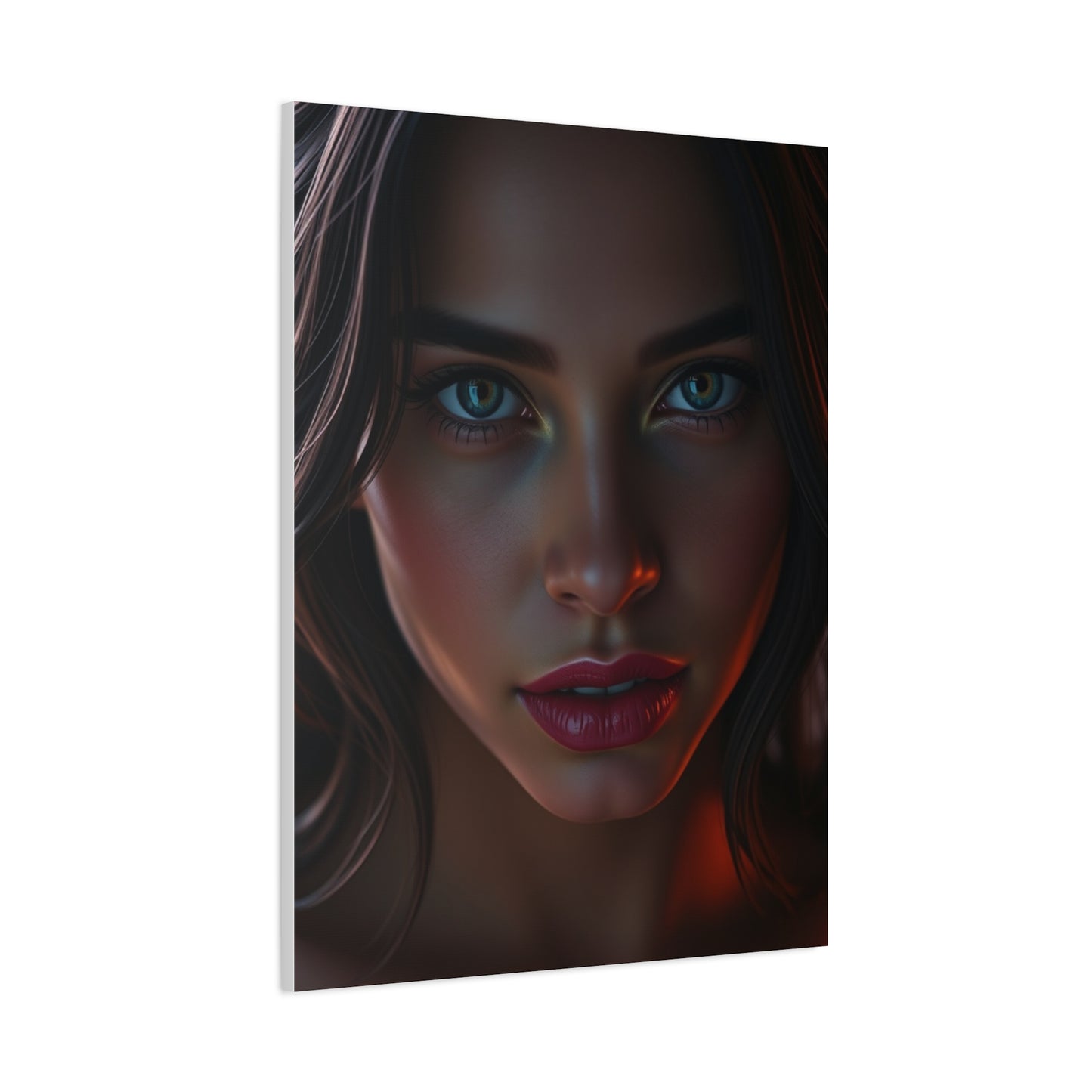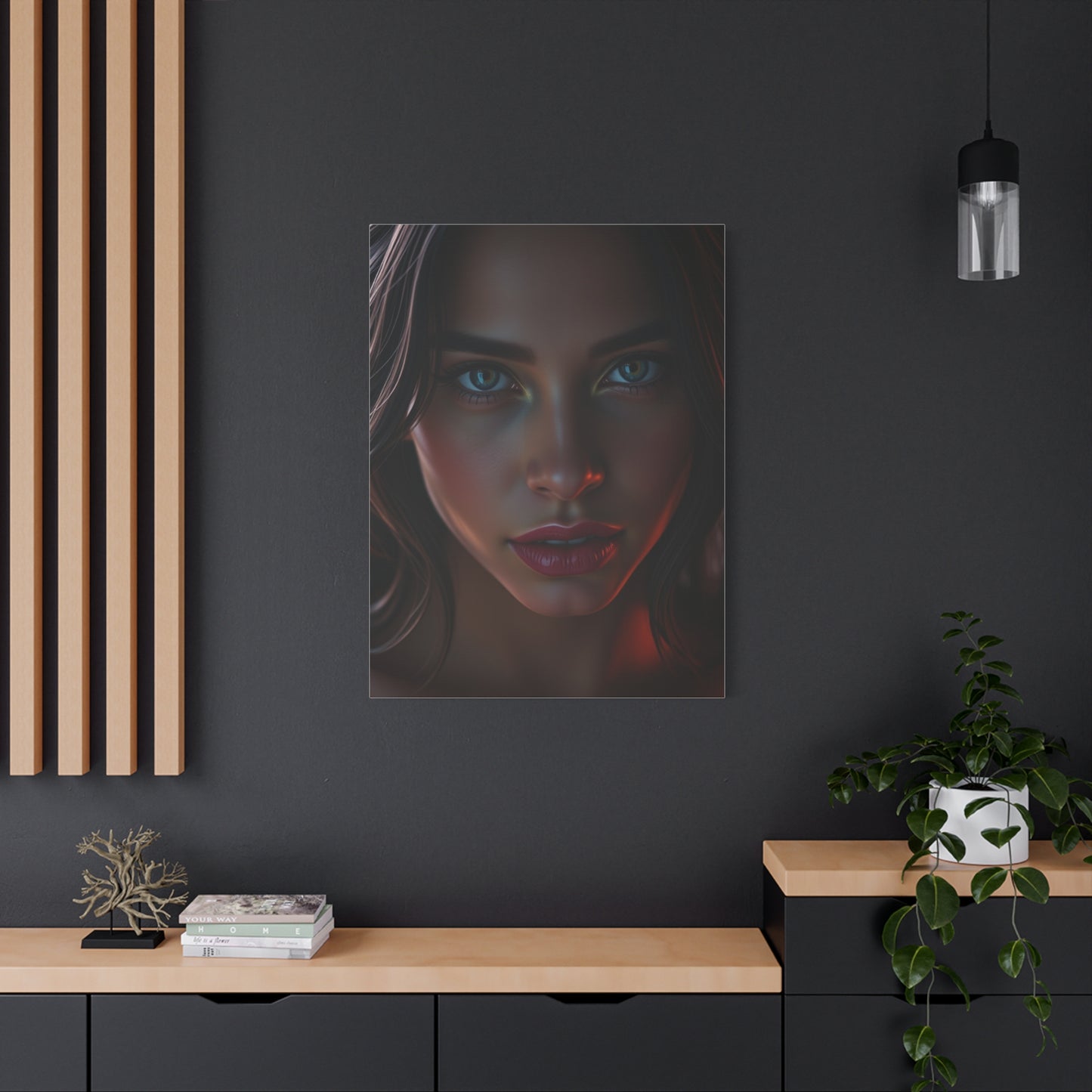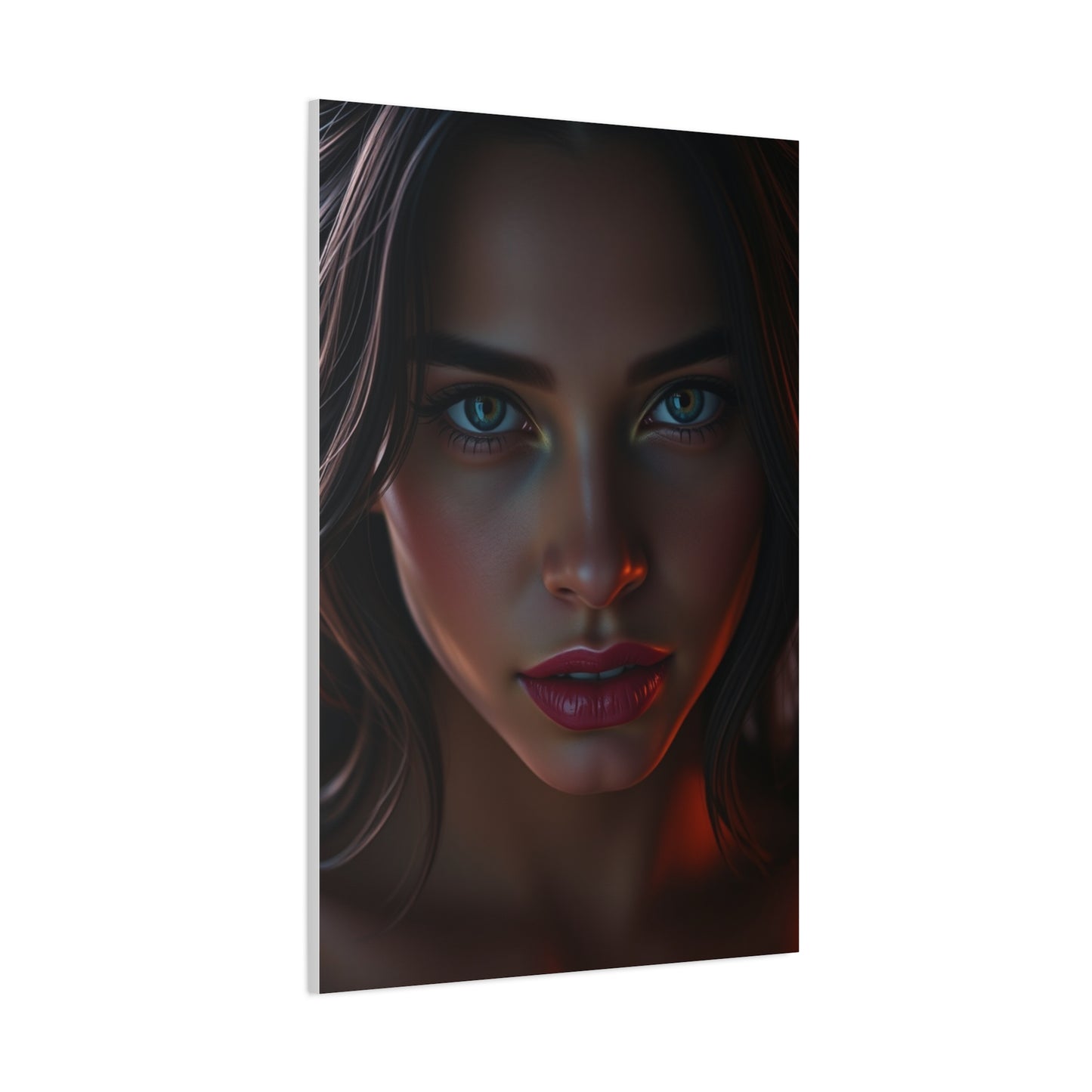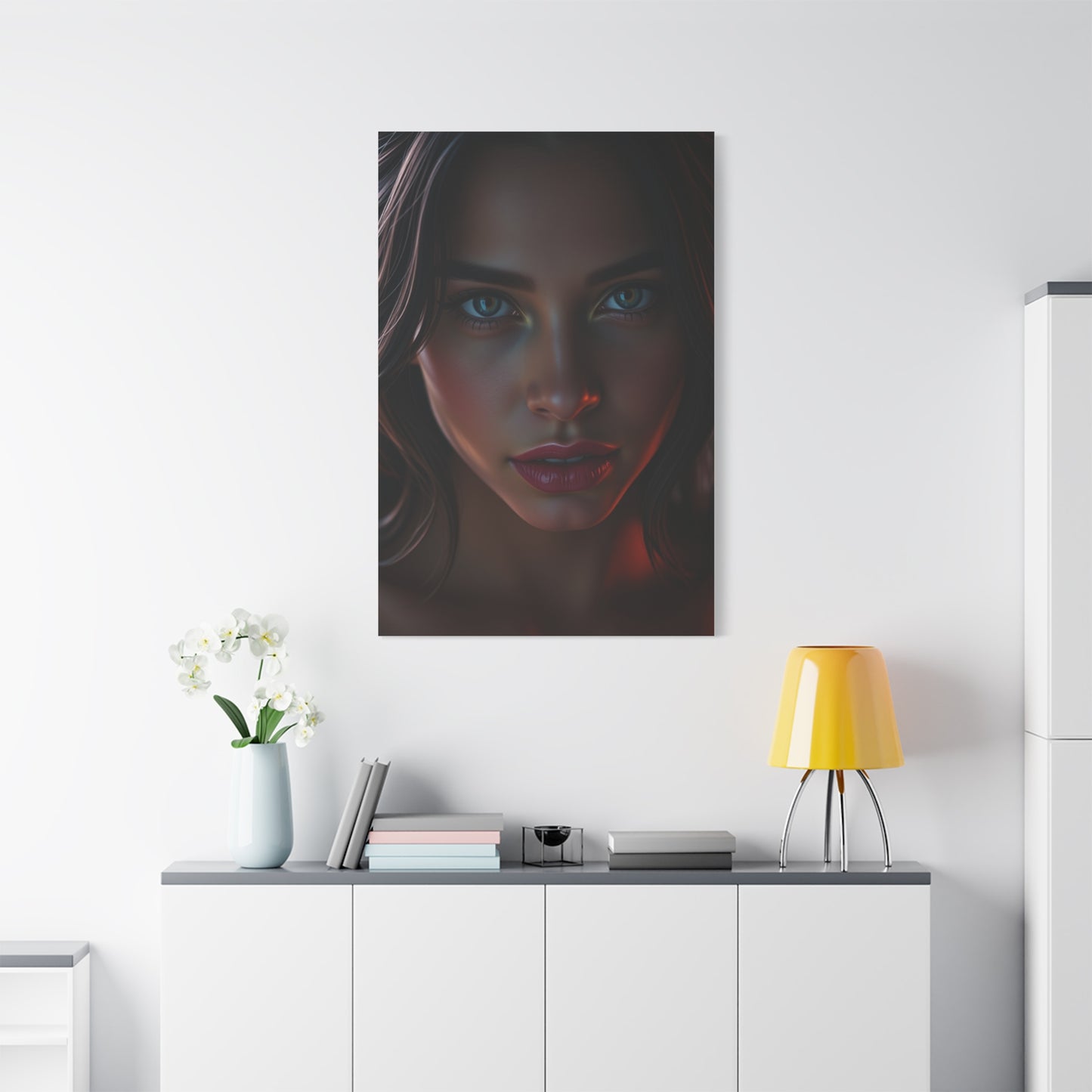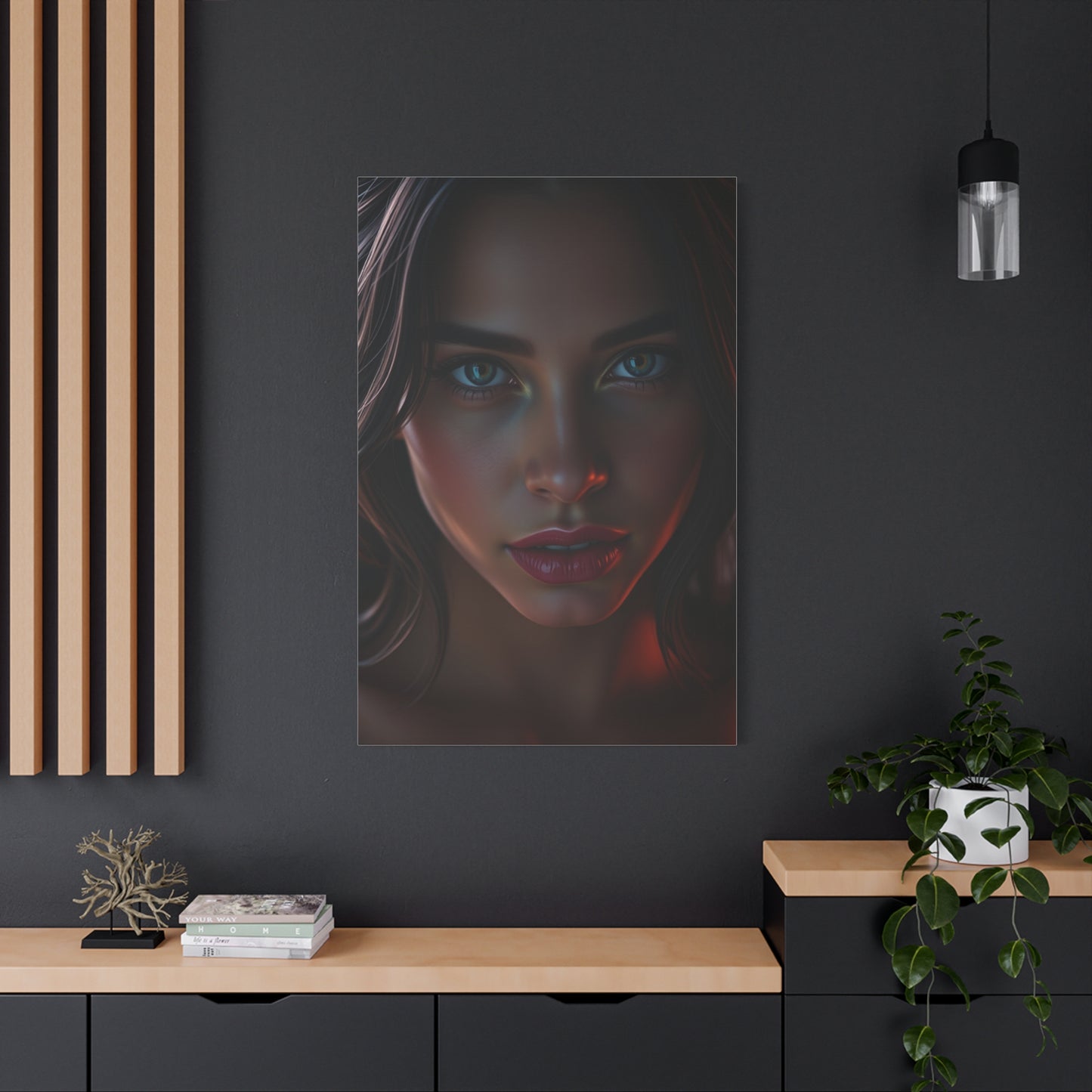Intimate Elegance Canvas: Complete Guide to Creating Sophisticated Personal Spaces
The concept of intimate elegance canvas represents a transformative approach to designing personal spaces that seamlessly blend sophistication with warmth and comfort. This philosophy extends far beyond mere decoration, embracing a holistic perspective on creating environments that resonate with individual personality while maintaining refined aesthetic standards. When we discuss intimate elegance canvas, we're exploring the delicate balance between grandeur and coziness, between formal beauty and personal expression. This design methodology recognizes that our living spaces should serve as sanctuaries where elegance doesn't sacrifice comfort, and sophistication doesn't diminish warmth. The foundation of this approach lies in understanding that true elegance emerges not from ostentation but from thoughtful curation of elements that speak to both visual harmony and emotional resonance. Every component within such a space contributes to an overarching narrative of refined living that feels authentically personal rather than staged or impersonal. The intimate elegance canvas philosophy encourages homeowners to think of their spaces as evolving artworks where each decision adds depth and character to the overall composition.
The Historical Evolution of Elegant Interior Design
Throughout history, the concept of elegant interior design has undergone remarkable transformations, reflecting changing social values, technological advances, and cultural movements. Ancient civilizations understood the power of creating sophisticated spaces, with Roman villas showcasing intricate mosaics and carefully proportioned rooms that demonstrated wealth and cultural refinement. During the Renaissance period, European aristocracy elevated interior design to an art form, incorporating elaborate frescoes, tapestries, and furniture that demonstrated exceptional craftsmanship. The Baroque and Rococo periods pushed decorative boundaries with ornate details, gilded surfaces, and dramatic architectural elements that defined luxury for centuries.
As societies evolved through the Industrial Revolution, new manufacturing techniques made elegant furnishings more accessible, though true sophistication remained associated with handcrafted quality and rare materials. The Arts and Crafts movement responded to industrialization by emphasizing authenticity, skilled workmanship, and the inherent beauty of natural materials. The twentieth century witnessed multiple design revolutions, from Art Nouveau's organic forms to Art Deco's geometric glamour, from Mid-Century Modern's clean lines to Postmodernism's playful eclecticism. Each movement contributed valuable insights into what constitutes elegance, gradually shifting from rigid formality toward more personalized expressions of refined taste. Contemporary interpretations of intimate elegance canvas draw from this rich historical tapestry, selecting and adapting elements that remain relevant to modern lifestyles while honoring timeless principles of proportion, quality, and aesthetic harmony.
Psychological Benefits of Elegant Living Spaces
The psychological impact of living within elegantly designed spaces extends far deeper than surface-level aesthetics, influencing mood, productivity, and overall wellbeing in profound ways. Research in environmental psychology demonstrates that thoughtfully designed interiors significantly affect stress levels, with harmonious spaces promoting relaxation and mental clarity. When individuals inhabit spaces characterized by intimate elegance canvas principles, they often experience enhanced self-esteem and confidence, as their environment reflects their values and aspirations. The visual harmony achieved through careful color coordination, balanced proportions, and quality materials creates a sense of order that translates into mental calmness and reduced anxiety. Elegant spaces that incorporate natural elements like plants, natural light, and organic materials have been shown to lower cortisol levels and improve cognitive function.
The presence of beautiful objects and artfully arranged furnishings stimulates positive emotional responses, releasing dopamine and creating associations between the space and feelings of contentment. Personalized elegant environments serve as extensions of identity, allowing individuals to express their authentic selves and fostering a sense of belonging and security. The intentionality behind each design choice in intimate elegance canvas approaches creates mindfulness about one's surroundings, encouraging present-moment awareness and reducing mental clutter. Well-designed intimate spaces also facilitate better relationships by providing comfortable, aesthetically pleasing settings for meaningful connections with family and friends. The pride of ownership that comes from living in a beautiful space motivates individuals to maintain their environment, creating positive behavioral patterns and a sense of accomplishment.
Fundamental Principles of Color Theory in Elegant Design
Color theory forms the backbone of successful intimate elegance canvas implementation, as color choices dramatically influence spatial perception, emotional atmosphere, and visual coherence. Understanding the color wheel's structure provides essential knowledge for creating harmonious palettes that support elegant aesthetics. Complementary colors, positioned opposite each other on the wheel, create dynamic tension when used thoughtfully in elegant spaces, providing visual interest without overwhelming refinement. Analogous color schemes, utilizing colors adjacent on the wheel, offer subtle sophistication ideal for creating serene, cohesive intimate environments. Monochromatic approaches, exploring various tones and shades of a single hue, epitomize understated elegance while adding depth through tonal variation. Neutral palettes featuring whites, creams, grays, and taupes provide timeless foundations for elegant design, offering versatility and allowing accent elements to shine.
Warm color families including reds, oranges, and yellows infuse spaces with energy and intimacy, particularly effective in gathering areas where warmth and connection are desired. Cool color palettes dominated by blues, greens, and purples create calming, sophisticated atmospheres ideal for restful spaces like bedrooms and libraries. The psychological effects of color cannot be overstated in intimate elegance canvas design, as different hues trigger distinct emotional and physiological responses. Saturation levels significantly impact elegance, with muted, desaturated colors generally conveying more refinement than bright, highly saturated alternatives. Color proportion matters enormously in elegant design, following guidelines like the sixty-thirty-ten rule where dominant, secondary, and accent colors are distributed in these proportions. Understanding how lighting conditions affect color perception ensures selections appear as intended throughout the day, maintaining elegance in varying natural and artificial light.
Selecting Premium Materials for Sophisticated Interiors
Material selection stands as perhaps the most critical factor in achieving authentic intimate elegance canvas aesthetics, as quality materials communicate refinement in ways that superficial decoration cannot replicate. Natural stone varieties including marble, granite, limestone, and travertine bring inherent luxury to interiors through their unique veining, durability, and timeless appeal. High-quality hardwoods such as walnut, oak, cherry, and mahogany provide warmth and character that improves with age, representing investment in lasting beauty. Precious metals like brass, copper, bronze, and even gold accents introduce subtle glamour when incorporated thoughtfully through fixtures, hardware, and decorative elements. Fine textiles including silk, cashmere, linen, and high-thread-count cottons offer tactile luxury that elevates everyday experiences through superior comfort and visual richness. Leather, particularly full-grain varieties, ages beautifully while providing sophisticated texture and durability for upholstered pieces and accessories.
Glass and crystal elements add luminosity and refinement, whether through chandeliers, decorative objects, or architectural features like interior windows. Natural fibers such as wool, cotton, jute, and sisal bring organic authenticity to elegant spaces through area rugs, window treatments, and upholstery. Porcelain and fine ceramics offer versatility in applications from flooring to decorative vessels, combining practicality with artistic expression. The provenance and craftsmanship behind materials matter significantly in intimate elegance canvas philosophy, with handmade and traditionally produced items carrying additional value. Sustainability increasingly influences material selection in elegant design, with environmentally responsible choices demonstrating contemporary sophistication and ethical awareness. Mixing materials thoughtfully creates visual interest and depth, preventing monotony while maintaining cohesive elegance through careful attention to scale, proportion, and finish compatibility.
Architectural Elements That Define Elegant Spaces
Architectural features form the permanent framework upon which intimate elegance canvas design builds, with structural elements significantly influencing spatial character and sophistication levels. Crown molding represents one of the most recognizable architectural details associated with elegance, adding visual weight and definition where walls meet ceilings. Wainscoting and wall paneling provide dimensional interest and traditional refinement, protecting walls while creating visual rhythm through horizontal divisions. Coffered ceilings transform overhead planes into architectural focal points, adding depth and grandeur through their geometric recessed patterns. Archways and curved openings soften transitions between spaces while introducing classical elegance that straight doorways cannot achieve. Built-in bookcases and custom cabinetry demonstrate commitment to quality and permanence, providing both functionality and sophisticated architectural presence.
Fireplaces serve as natural focal points in elegant rooms, with mantel design and surround materials setting the tone for the entire space. French doors with divided lights enhance elegance by maximizing natural light while creating visual connection between interior and exterior spaces. Window casings and trim details frame views and natural light, with proportion and profile directly impacting perceived sophistication. Floor-to-ceiling windows or strategically placed clerestory windows flood spaces with natural light while creating dramatic architectural statements. Tray ceilings add subtle architectural interest and perceived height, creating opportunities for integrated lighting that enhances ambient elegance. Columns and pilasters introduce classical proportions and vertical emphasis, lending gravitas to larger spaces without overwhelming intimate scale. Material choices for architectural elements significantly affect elegance, with wood species, finish quality, and detail execution determining whether features enhance or detract from sophisticated aesthetics.
Furniture Selection for Timeless Sophistication
Furniture selection represents a pivotal decision in creating intimate elegance canvas environments, as these pieces occupy significant visual space while serving essential functional roles. Investment in quality construction ensures longevity, with solid wood frames, eight-way hand-tied springs, and traditional joinery techniques distinguishing superior pieces from mass-produced alternatives. Scale and proportion relative to room dimensions determine whether furniture enhances or overwhelms elegant aesthetics, requiring careful measurement and spatial planning. Classic furniture styles including Chippendale, Queen Anne, Louis XVI, and mid-century modern designs offer proven elegance that transcends temporary trends. Upholstered pieces in neutral, sophisticated fabrics provide versatility and refinement, allowing accent pillows and accessories to introduce pattern and color variation.
The arrangement of furniture affects both functionality and elegance, with conversation groupings and clear circulation paths creating harmonious, livable spaces. Statement pieces like an exceptional sofa, an antique dresser, or a designer chair can anchor entire rooms while expressing personal style within elegant parameters. Mixed furniture periods prevent museum-like rigidity, creating layered sophistication that appears collected over time rather than purchased in single transactions. The finish quality on wood furniture dramatically impacts elegance, with hand-rubbed finishes and carefully selected stains revealing wood grain beauty. Furniture legs and base treatments contribute significantly to perceived elegance, with exposed legs creating lighter visual weight than skirted pieces. Hardware selection for case goods should complement overall aesthetics, with quality materials and appropriate scale maintaining cohesive sophistication. Custom or semi-custom furniture allows personalization of proportions, finishes, and details, ensuring pieces integrate perfectly within intimate elegance canvas schemes.
Lighting Design Strategies for Elegant Ambiance
Lighting design fundamentally shapes the character of elegant interiors, with thoughtful illumination strategies transforming ordinary spaces into sophisticated sanctuaries. Layered lighting approaches combining ambient, task, and accent lighting provide flexibility and depth, allowing spaces to adapt to different activities and moods. Chandeliers serve as jewelry for rooms, providing both illumination and sculptural beauty that anchors elegant aesthetics, particularly in dining rooms and entryways. Wall sconces add architectural interest while providing flattering ambient light, with placement approximately sixty to seventy inches from floor level for optimal effect. Table and floor lamps introduce intimate pools of light while offering opportunities for decorative expression through base materials, shade selection, and overall design.
Recessed lighting provides clean, unobtrusive illumination when fixtures are properly sized and spaced, supporting elegant aesthetics without competing visually. Picture lights and display lighting highlight art and collectibles, adding museum-quality sophistication while drawing attention to curated objects. Dimmer switches prove essential for elegant spaces, allowing light intensity adjustment that transforms atmosphere from bright and energetic to soft and intimate. Natural light maximization through window treatments that frame rather than block daylight maintains connection with exterior environments while supporting wellbeing. Color temperature selection affects perceived elegance, with warm white light typically supporting sophisticated interiors better than cool or daylight temperatures. Indirect lighting techniques including cove lighting, valance lighting, and backlit panels create soft, sophisticated ambiance without harsh shadows or glare. Lighting controls including smart systems and scene programming allow seamless transitions between different lighting scenarios, supporting the intimate elegance canvas lifestyle.
Window Treatment Solutions for Privacy and Beauty
Window treatments perform dual roles in elegant interiors, providing essential light control and privacy while contributing significantly to aesthetic sophistication. Custom drapery panels in luxurious fabrics create softness and visual weight, framing windows beautifully while offering insulation and light management. Lined and interlined draperies provide superior body and drape quality, hanging beautifully while offering enhanced light blocking and thermal properties. Hardware selection including rods, finials, and mounting brackets should reflect overall elegance, with substantial materials and appropriate finishes complementing other metallic elements. Layering window treatments through combinations of sheers, blinds, and draperies offers maximum versatility while creating dimensional visual interest. Roman shades provide tailored sophistication with clean lines when raised, suitable for both traditional and contemporary elegant interiors.
Plantation shutters offer architectural permanence and timeless elegance, particularly effective in homes with period architecture or coastal influences. Valances and cornices add decorative tops to window treatments, concealing hardware while introducing additional opportunities for fabric, trim, and design expression. Sheer panels filter light beautifully while maintaining privacy during daylight hours, creating ethereal elegance particularly effective in bedrooms and living areas. Motorization of window treatments adds contemporary convenience to elegant spaces, allowing effortless control while eliminating dangling cords. Measurement and installation precision separate professional from amateur results, with proper fullness, length, and mounting height essential for achieving elegant presentation. Fabric selection for window treatments should coordinate with overall color schemes while considering light filtration properties, pattern scale, and maintenance requirements. Trimming details including borders, tape, fringe, and tassels can elevate simple panels into custom creations that enhance intimate elegance canvas aesthetics.
Art Curation and Display in Sophisticated Spaces
Art curation transforms elegant spaces into personalized galleries that reflect individual taste while demonstrating cultural sophistication and aesthetic discernment. Original artwork provides unique beauty and investment potential, with paintings, sculptures, and mixed media pieces adding irreplaceable character to intimate elegance canvas interiors. Scale relationship between artwork and wall space determines visual impact, with pieces sized appropriately to anchor spaces without overwhelming or appearing lost. Gallery walls arranged with mathematical precision or organic intuition create focal points while displaying collections that tell personal stories. Framing quality dramatically affects art presentation, with custom frames using archival materials and appropriate profiles enhancing rather than distracting from artwork. Lighting artwork properly through picture lights or adjustable track lighting ensures pieces are viewed as intended while adding museum-quality sophistication.
Mixing art periods and styles demonstrates confidence and cultivated taste, creating more interesting visual narratives than strictly matched collections. Photography as fine art has gained deserved recognition in elegant interiors, offering diverse subjects, sizes, and presentation styles. Three-dimensional art including sculptures, ceramics, and glass work adds tactile interest and creates opportunities for display on pedestals, in niches, or on shelving. Art placement height follows general guidelines positioning center points at approximately sixty inches from floor level, though adjustments suit specific circumstances. Rotating artwork periodically refreshes spaces and allows full collection enjoyment, preventing visual habituation while protecting pieces from prolonged light exposure. Commissioning custom artwork for specific spaces ensures perfect scale, color coordination, and personal meaning within intimate elegance canvas environments. Art insurance and proper conservation practices protect investments while demonstrating serious collecting commitment, essential considerations for valuable pieces.
Textile Layering for Depth and Comfort
Textile layering creates the tactile richness and visual depth that distinguish truly elegant interiors from merely decorated spaces. Area rugs anchor furniture groupings while defining zones within larger spaces, with size, pattern, and material selection critical to achieving sophisticated results. Throw pillows introduce color, pattern, and texture variation, with varying sizes, shapes, and arrangements creating visual interest on sofas and beds. Blankets and throws draped casually over furniture add inviting warmth while providing opportunities for introducing additional textile interest. Upholstery fabrics require careful selection balancing durability, comfort, and aesthetics, with natural fiber content generally supporting elegant longevity better than synthetic alternatives. Window treatment fabrics contribute significantly to overall textile harmony, with coordination rather than exact matching creating sophisticated cohesion.
Bedding layers including sheets, blankets, coverlets, and duvet covers create luxurious depth while serving practical temperature regulation functions. Textile patterns should vary in scale throughout spaces, mixing large, medium, and small scale designs to create visual rhythm without chaos. Texture mixing including smooth silk with nubby linen, plush velvet with crisp cotton creates tactile interest that defines elegant sophistication. Seasonal textile rotation allows spaces to adapt to changing weather while refreshing aesthetics, with lighter fabrics for warm months and heavier textures for cold seasons. Quality textile care including professional cleaning, proper storage, and rotation extends lifespan while maintaining appearance standards befitting elegant interiors. Textile color coordination should reference the overall palette while allowing subtle variation that creates depth rather than flat uniformity. Custom textile applications including upholstery, drapery, and bedding ensure perfect fit and exclusive designs unavailable through ready-made sources, elevating intimate elegance canvas to truly personal expression.
Creating Focal Points That Command Attention
Strategic focal point creation directs visual attention and provides anchoring elements around which elegant room designs organize and cohere. Fireplaces naturally serve as architectural focal points, with mantel styling and surround treatments determining whether they fulfill their elegant potential. Statement furniture pieces including exceptional sofas, antique cabinets, or designer chairs can anchor entire rooms while expressing sophisticated taste. Large-scale artwork positioned prominently on feature walls creates immediate visual impact while demonstrating artistic appreciation and curatorial judgment. Architectural features including coffered ceilings, exposed beams, or distinctive windows become focal points through highlighting rather than concealment. Accent walls created through paint color, wallpaper, or distinctive material application draw focus while adding dimension to otherwise uniform spaces. Sculptural lighting fixtures including chandeliers and dramatic pendants serve dual purposes as functional illumination and artistic focal points.
Built-in features like floor-to-ceiling bookcases or window seats provide permanent focal points that combine beauty with functionality. Collections displayed cohesively whether ceramics, books, or decorative objects create focal points through intentional curation and arrangement. Mirrors positioned strategically multiply light and space while creating focal points, particularly when frames possess distinctive scale or ornamentation. Textured walls created through paneling, stone, or specialty plaster techniques add dimensional interest that naturally attracts visual attention. Feature furniture arrangements including symmetrical seating flanking fireplaces or windows create balanced focal points supporting intimate elegance canvas principles. Plants and greenery of substantial scale bring organic focal points into elegant interiors, with floor plants in beautiful containers adding life and architectural presence.
Balancing Symmetry and Asymmetry in Design
The interplay between symmetrical balance and asymmetrical interest determines whether elegant spaces feel dynamic or static, formal or relaxed. Classical symmetry creates instant elegance through mirror-image arrangements, particularly effective flanking fireplaces, in bedrooms, and along formal corridors. Asymmetrical balance offers more contemporary sophistication, requiring careful attention to visual weight distribution for successful execution. Mixing both approaches within single spaces creates rhythm variation that maintains elegance while preventing predictability and boredom. Furniture placement often benefits from symmetrical grounding with asymmetrical accents, providing stability while allowing personality and flexibility. Architectural elements typically employ symmetry, with matching windows, aligned doorways, and centered features supporting elegant formality. Accessory arrangements benefit from asymmetrical groupings using odd numbers and varied heights, creating visual interest within orderly frameworks.
Wall art display can utilize either approach effectively, with symmetrical gallery walls conveying different messages than asymmetrically arranged collections. Lighting placement often combines both principles, with symmetrical ambient lighting supporting asymmetrically placed task and accent fixtures. Color distribution benefits from balanced asymmetry, with dominant hues appearing throughout spaces in varying proportions rather than strict repetition. Pattern mixing requires asymmetrical thinking to avoid overwhelming spaces, with varied scales and placements preventing pattern clash. Textile distribution including pillows, throws, and area rugs creates opportunities for both approaches depending on desired formality levels. The intimate elegance canvas philosophy embraces flexibility in symmetry application, recognizing that personal comfort and spatial function should guide decisions within elegant parameters.
Incorporating Natural Elements and Biophilic Design
Biophilic design principles enhance intimate elegance canvas spaces by incorporating natural elements that support human wellbeing while adding organic beauty. Living plants introduce vital energy and air-purifying benefits, with selection based on light conditions, maintenance preferences, and desired visual impact. Natural light maximization through strategic window placement and minimal obstructions supports circadian rhythms while showcasing interior elegance throughout changing daylight. Wood elements including flooring, furniture, architectural details, and decorative objects bring warmth and organic texture fundamental to approachable elegance. Stone surfaces and accents connect interiors with earth's timeless materials, offering durability and natural beauty that improves with age. Water features from elaborate fountains to simple vessels create soothing soundscapes while introducing moving natural elements into static built environments.
Natural fiber textiles including linen, cotton, wool, jute, and silk provide tactile connections with organic origins while supporting sustainable practices. Views to nature through thoughtfully positioned windows and glass doors extend interior spaces visually while maintaining psychological connections with exterior environments. Natural color palettes inspired by earth, sky, flora, and minerals create harmonious elegance that resonates with innate human preferences. Organic shapes and forms in furniture, accessories, and architectural elements soften geometric built environments, creating visual relief and natural flow. Natural materials like rattan, bamboo, and seagrass introduce texture and cultural richness while supporting environmental sustainability. Seasonal natural elements including flowers, branches, and foliage bring temporal beauty that connects interior life with natural cycles. Indoor-outdoor connections through French doors, covered patios, and consistent flooring materials blur boundaries between environments, expanding perceived space while embracing natural context.
Storage Solutions That Maintain Clean Aesthetics
Effective storage solutions preserve the clean, uncluttered appearance essential to elegant interiors while providing necessary organization for modern life's accumulation. Built-in cabinetry provides custom storage that appears architectural rather than added, with designs complementing overall aesthetic direction. Closed storage including cabinets with doors, drawers, and concealed compartments hides visual clutter while protecting contents from dust and damage. Open shelving creates opportunities for curated display, requiring discipline to maintain elegant appearance through careful editing and arrangement. Multi-functional furniture including storage ottomans, lift-top coffee tables, and beds with drawers maximizes space efficiency without compromising aesthetic elegance. Walk-in closets with custom organization systems transform clothing storage into luxury experiences while maintaining bedroom serenity.
Concealed storage behind decorative screens, within benches, or under staircases utilizes available space creatively without visual disruption. Display cabinets with glass doors protect collectibles while allowing visibility, combining storage with elegant showcase functionality. Console tables with drawers provide entrance storage for keys and mail while serving as display surfaces for decorative objects. Armoires and wardrobes offer substantial storage with furniture presence, particularly valuable in spaces lacking adequate closets. Under-bed storage using attractive containers or built-in drawers utilizes otherwise wasted space without compromising bedroom elegance. Window seat storage combines functional seating with hidden compartment storage, adding architectural interest while solving practical needs. Mudroom systems with cubbies, hooks, and concealed storage maintain entrance elegance while organizing outerwear and accessories. The intimate elegance canvas approach views storage as design opportunity rather than necessary evil, integrating solutions seamlessly within overall aesthetic vision.
Color Psychology and Emotional Interior Design
Color psychology profoundly influences emotional responses to interior spaces, making understanding these effects crucial for intimate elegance canvas implementation. Red stimulates energy and passion, used sparingly in elegant interiors to create accent moments rather than overwhelming presence. Orange combines red's energy with yellow's cheerfulness, effective in social spaces when muted to terracotta or coral for sophisticated application. Yellow promotes optimism and mental clarity, with soft buttery or golden tones adding warmth to elegant spaces without jarring brightness. Green connects with nature while promoting tranquility and balance, available in endless elegant iterations from sage to emerald. Blue encourages calm and introspection, with navy, powder, and teal offering sophisticated alternatives to potentially cold primary blue.
Purple historically associated with luxury and spirituality works elegantly in muted lavender or deep eggplant applications. Pink challenges traditional perceptions, with dusty rose, blush, and mauve providing surprisingly sophisticated neutral alternatives in contemporary elegant design. Brown and earth tones ground spaces while promoting security and comfort, fundamental to creating intimate elegant environments. White symbolizes purity and simplicity, creating elegant backdrops while varying from warm ivory to cool bright white. Gray offers sophisticated neutrality in endless variations, with undertones critically affecting whether spaces feel warm or cold. Black adds drama and definition when used judiciously, grounding elegant spaces and providing contrast that makes other colors vibrate. Color combinations affect mood multiplicatively, with harmonious palettes promoting peace while contrasting schemes create stimulation. Understanding personal color responses allows customization of intimate elegance canvas spaces that support individual emotional needs and preferences.
Seasonal Decoration Without Compromising Elegance
Seasonal decoration presents opportunities to refresh elegant spaces while celebrating temporal changes without undermining year-round sophistication. Subtle transitions through pillow covers, throws, and small accessories allow seasonal acknowledgment without overwhelming permanent elegant foundations. Natural seasonal elements including branches, flowers, and foliage bring authentic connections with changing nature while maintaining organic elegance. Color palette shifts using seasonal hues in accessories and textiles create freshness while preserving overall color harmony and sophistication. Quality over quantity in seasonal decoration maintains elegant restraint, with few exceptional pieces creating more impact than numerous mediocre additions. Elegant seasonal storage solutions protect decorations while keeping them organized and accessible for efficient transitions between seasons.
Spring decoration emphasizes renewal through fresh flowers, lighter textiles, and pastel accents that maintain sophisticated subtlety. Summer approaches favor natural materials, outdoor elements, and lighter color palettes that reflect seasonal lightness and airiness. Autumn decoration introduces richer colors, textured materials, and harvest elements presented with elegant restraint rather than rustic overstatement. Winter holiday decoration requires particular discipline, balancing festive spirit with maintained elegance through cohesive color schemes and quality ornaments. Transitional pieces that work across seasons provide continuity and reduce decoration fatigue, with neutral elements anchoring changing accents. Lighting adjustments including candles, adjusted dimmer settings, and seasonal arrangements create atmospheric changes supporting different seasonal moods. The intimate elegance canvas philosophy views seasonal decoration as enhancement rather than transformation, celebrating nature's cycles while honoring established sophisticated foundations.
Mixing Traditional and Contemporary Design Elements
Successfully mixing traditional and contemporary elements creates dynamic intimate elegance canvas spaces that feel both timeless and current. Understanding design vocabulary from different periods allows informed selection and combination rather than accidental, incoherent mixing. Scale consistency across mixed period pieces creates visual cohesion despite stylistic differences, with proportional relationships more important than temporal consistency. Color palette unity provides essential cohesion when mixing styles, with consistent hues helping disparate pieces read as intentional collection. Material repetition including wood species, metal finishes, and textile fibers creates threads connecting pieces from different design periods. Contemporary furniture in traditional spaces prevents museum-quality stiffness while traditional pieces in contemporary settings add depth and character.
Artwork selection offers opportunities for period mixing, with contemporary works enlivening traditional interiors and antique pieces grounding modern spaces. Architectural neutrality allows easier style mixing, with simple backdrops accommodating diverse furnishing approaches better than highly detailed traditional architecture. Transitional furniture styles specifically designed to bridge traditional and contemporary aesthetics facilitate mixing while maintaining coherent elegance. Strategic placement distributes mixed periods throughout spaces rather than segregating them, creating integrated aesthetics rather than uncomfortable juxtapositions. Personal collections and meaningful objects justify their presence regardless of period, with emotional significance transcending stylistic considerations. Professional guidance through interior designers experienced in eclectic sophistication can prevent costly mistakes while building confidence in personal mixing abilities. The intimate elegance canvas approach celebrates individual expression through thoughtful period mixing, rejecting rigid adherence to single style periods as unnecessarily limiting.
Maximizing Small Spaces With Elegant Solutions
Small space elegance requires strategic design decisions that maximize functionality and beauty without compromising sophisticated aesthetics. Scale-appropriate furniture prevents overwhelming small spaces, with properly proportioned pieces creating more spacious feeling than oversized alternatives. Multi-functional pieces including sofa beds, nesting tables, and expandable dining tables provide flexibility without permanent space consumption. Vertical emphasis through tall bookcases, floor-to-ceiling curtains, and vertical art placement draws eyes upward, creating perceived height in compact spaces. Light color palettes reflect available light while creating spaciousness, with soft neutrals proving more elegant than stark white. Strategic mirror placement multiplies space and light, with large mirrors or mirror collections creating significant visual expansion. Floating furniture including wall-mounted cabinets and vanities creates floor space visibility that makes rooms feel larger.
Consistent flooring throughout connected spaces creates visual flow that expands perceived square footage beyond actual measurements. Minimal window treatments maximize natural light while avoiding visual weight that can shrink small spaces. Streamlined storage solutions maintain an uncluttered appearance essential for small space elegance, with concealed storage preferred over open shelving. Lighting layering including ambient, task, and accent fixtures creates depth and dimension that counteracts small space limitations. Scaled-down patterns and subtle textures add visual interest without overwhelming limited space, with large patterns reserved for single accent applications. Furniture arrangement emphasizing function and flow ensures small spaces feel livable rather than cramped, with clear circulation paths essential. The intimate elegance canvas philosophy proves particularly valuable in small spaces where every decision carries magnified impact on overall sophistication and livability.
Luxury Bathroom Design for Spa-Like Retreats
Bathroom design in intimate elegance canvas applications transforms functional spaces into luxurious retreats that support daily wellness rituals. High-quality plumbing fixtures including faucets, showerheads, and tub fillers provide both aesthetic beauty and superior performance justifying investment. Natural stone surfaces including marble, granite, and limestone introduce timeless luxury while offering durability and unique visual character. Freestanding soaking tubs create sculptural focal points while providing deeply relaxing bathing experiences unavailable through standard built-in alternatives. Walk-in showers with frameless glass enclosures, multiple showerheads, and built-in seating elevate daily cleansing to spa-quality experiences. Heated floors provide luxury comfort particularly appreciated during cold months, with radiant systems offering silent, efficient warmth. Custom vanities with ample storage, beautiful countertops, and elegant sinks combine functionality with furniture-quality presence.
Lighting design including ambient ceiling fixtures, task lighting at mirrors, and accent lighting creates layered illumination supporting various activities and moods. Mirrors sized generously and framed beautifully serve practical functions while contributing significantly to bathroom elegance and perceived spaciousness. Textile quality including plush towels, luxurious bath mats, and elegant shower curtains provides tactile luxury supporting spa-like atmosphere. Hardware finishes coordinated throughout including faucets, towel bars, cabinet pulls, and lighting fixtures creates cohesive elegance through material consistency. Paint and wallpaper selections resistant to moisture while maintaining sophisticated aesthetics require careful product selection appropriate for bathroom conditions. Storage solutions including medicine cabinets, linen closets, and drawer organizers maintain serene, uncluttered appearance essential for spa-like elegance. The intimate elegance canvas bathroom becomes personal sanctuary where daily routines transform into restorative rituals supporting overall wellbeing.
Kitchen Design That Combines Function and Beauty
Kitchen design balancing culinary functionality with intimate elegance canvas principles creates spaces that serve as both efficient workspaces and beautiful gathering areas. Custom cabinetry designed specifically for space and storage needs provides maximum efficiency while allowing aesthetic customization unavailable through stock alternatives. High-quality countertop materials including granite, marble, quartzite, and engineered surfaces combine durability with sophisticated beauty supporting both preparation and presentation. Professional-grade appliances offer superior performance while panel-ready options allow seamless integration within cabinetry for elegant aesthetics. Thoughtful lighting design combining task lighting over work surfaces, ambient general lighting, and accent lighting creates versatile illumination supporting various kitchen activities. Island designs providing additional work surface, storage, and seating create multi-functional focal points while facilitating social interaction during meal preparation.
Backsplash treatments using tile, stone, or glass protect walls while offering opportunities for artistic expression within functional context. Hardware selection for cabinets and drawers should complement overall finishes while providing comfortable functionality, with quality mechanisms ensuring smooth operation. Open shelving displays beautiful dishes and cookware, requiring discipline to maintain elegant appearance while providing convenient access. Pantry organization systems maximize storage efficiency while maintaining visual order, with pull-out shelves and custom inserts optimizing space utilization. Seating areas whether at islands, peninsulas, or adjacent breakfast nooks extend kitchen functionality while supporting the gathering and conversation central to home life. Ventilation systems including range hoods remove cooking odors and heat while serving as design statements when selected thoughtfully. Flooring materials must withstand kitchen traffic and spills while supporting overall elegance, with options including hardwood, tile, and luxury vinyl. The intimate elegance canvas kitchen transcends purely utilitarian function, becoming the home's heart where beauty and practicality coexist harmoniously.
Master Bedroom Sanctuaries of Rest and Romance
Master bedroom design within intimate elegance canvas frameworks creates personal sanctuaries that support restorative sleep and intimate connection. Bed selection including size, mattress quality, and frame design anchors bedroom design while directly impacting sleep quality and aesthetic presence. Bedding layers including quality sheets, comfortable blankets, decorative pillows, and elegant coverlets create luxurious depth while supporting varied temperature preferences. Nightstand selection providing storage, surface space, and visual balance frames the bed while offering functional support for reading, devices, and personal items. Seating areas including chairs, chaises, or small sofas transform bedrooms into true retreats offering alternatives to bed-based activities. Dressing areas with mirrors, adequate lighting, and accessible storage support morning routines while maintaining bedroom serenity. Closet systems organized efficiently maximize storage while protecting clothing investment, with custom designs accommodating specific wardrobe requirements.
Window treatments balancing light control with aesthetic beauty provide essential darkness for quality sleep while contributing significantly to overall bedroom elegance. Flooring choices typically favor carpet for warmth and comfort underfoot, though area rugs over hardwood offer flexibility and visual interest. Color palettes emphasizing calming, romantic hues support bedroom's dual functions, with soft neutrals, blues, greens, and warm earth tones proving popular choices. Lighting design layering ambient illumination, task lighting for reading, and accent fixtures creates flexibility supporting different activities and moods. Artwork selection personal and meaningful creates emotional connections while maintaining sophisticated aesthetics appropriate for private spaces. Technology integration including televisions, sound systems, and automated controls requires thoughtful planning to maintain elegance while providing modern convenience. The intimate elegance canvas master bedroom becomes ultimate personal retreat where daily stresses release and intimate connections deepen.
Creating Welcoming Entrance and Hallway Spaces
Entrance and hallway design establishes first impressions while providing functional transition spaces between exterior and interior environments. Entrance flooring must withstand weather and traffic while maintaining elegant appearance, with options including tile, stone, and durable hardwood. Console tables provide surfaces for keys, mail, and decorative displays while anchoring entrance design and offering concealed storage. Mirrors strategically placed provide final appearance checks while visually expanding typically compact entrance spaces through light reflection. Lighting fixtures including chandeliers or statement pendants create immediate elegance while providing necessary illumination for safe navigation. Seating options like benches or small chairs add functionality for removing shoes while contributing to furnished, finished appearance. Coat storage through closets, hooks, or hall trees maintains entrance organization while acknowledging practical needs without compromising aesthetics. Artwork selection for entrances sets aesthetic tone for entire home, with pieces reflecting overall style while welcoming visitors. Hallway design transforms circulation space into gallery opportunities through art display, lighting design, and architectural detail.
Conclusion:
Intimate Elegance Canvas represents the ultimate approach to designing personal spaces that are both sophisticated and deeply reflective of individual taste. In today’s world, where home environments are more than just functional spaces, creating an atmosphere that nurtures comfort, style, and personal expression has become increasingly important. Through the thoughtful integration of elegant canvas art, homeowners and designers can transform ordinary rooms into sanctuaries that exude charm, serenity, and a sense of identity. This guide has explored the principles, techniques, and inspirations behind cultivating intimate elegance in personal spaces, emphasizing how carefully curated artwork can elevate both aesthetic appeal and emotional resonance.
At the heart of Intimate Elegance Canvas is the recognition that art is not merely decorative—it is transformative. Each canvas has the ability to set the tone for a room, influencing mood, perception, and ambiance. From soft, muted landscapes that evoke calm and reflection to bold, expressive compositions that inspire energy and creativity, the choice of canvas art plays a pivotal role in shaping the personality of a space. By selecting pieces that resonate with personal experiences, preferences, or aspirations, individuals can infuse their homes with meaning and character, ensuring that each corner tells a story unique to its inhabitant.
Sophistication in personal spaces is not solely about aesthetics; it is about balance. Intimate Elegance Canvas emphasizes the importance of harmonizing color, texture, and form to create environments that feel cohesive yet inviting. Thoughtful placement of canvases—whether as central focal points, complementary accents, or part of curated gallery walls—can enhance the flow of a room and amplify its visual appeal. For example, a large statement canvas above a bed or sofa can serve as the anchor of a room, while smaller, thematically connected pieces can be strategically arranged to guide the eye and create a sense of rhythm. This careful orchestration ensures that elegance is achieved without sacrificing the comfort and intimacy essential to personal spaces.
Beyond visual appeal, canvas art contributes to the emotional and psychological experience of a room. Spaces adorned with meaningful artwork encourage reflection, relaxation, and connection. Soft, atmospheric pieces can transform a bedroom or reading nook into a sanctuary, fostering mindfulness and tranquility. Vibrant, abstract compositions in a home office or creative studio can stimulate imagination and motivation. By tailoring the choice of canvases to the intended function and emotional goal of each room, homeowners can curate an environment that supports both daily living and personal growth.
Another defining aspect of intimate elegance is versatility. Canvas art allows for flexibility in design, making it accessible for a variety of décor styles—from modern minimalism and contemporary chic to traditional, bohemian, or eclectic interiors. The wide range of themes, textures, and finishes ensures that each canvas can harmonize with existing furnishings, color schemes, and architectural elements. This adaptability allows homeowners to continuously evolve their personal spaces, introducing new works or rearranging compositions to reflect changing tastes, seasons, or milestones in life. In essence, canvas art provides an enduring yet dynamic means of maintaining sophistication over time.
In addition to enhancing interior aesthetics and ambiance, the use of Intimate Elegance Canvas also underscores the significance of personal storytelling in design. Each piece of art, whether abstract, figurative, or landscape-inspired, embodies an artistic narrative that resonates with the individual. By thoughtfully selecting and displaying canvases that reflect one’s journey, passions, or inspirations, a home becomes more than a living environment—it becomes a curated gallery of experiences and values. This layer of personalization elevates the concept of elegance from mere style to meaningful sophistication, creating spaces that feel truly alive and intimately connected to their owners.
Ultimately, creating sophisticated personal spaces through the strategic use of canvas art is about cultivating harmony, beauty, and emotional resonance. Intimate Elegance Canvas demonstrates how intentional choices in artwork can shape both the look and the feel of a home, resulting in environments that are visually striking, emotionally fulfilling, and uniquely expressive. The integration of canvases transforms walls into narratives, corners into contemplative havens, and rooms into immersive experiences. By prioritizing both aesthetic refinement and personal significance, homeowners can achieve a level of sophistication that is as intimate as it is elegant, ensuring that every space reflects the essence of those who inhabit it.
In conclusion, Intimate Elegance Canvas is more than a design concept—it is a philosophy of creating personal spaces that combine beauty, comfort, and meaningful expression. Through the thoughtful selection, arrangement, and curation of canvas artwork, individuals can transform their homes into sanctuaries of style and serenity, spaces that not only captivate the eye but also nurture the soul. The mastery of this approach lies in balancing visual impact with emotional depth, producing interiors that are sophisticated, inviting, and uniquely personal. By embracing the principles of Intimate Elegance Canvas, every home can achieve a refined sense of identity, where each wall, each corner, and each curated piece contributes to an enduring atmosphere of elegance, intimacy, and artistic harmony.

















